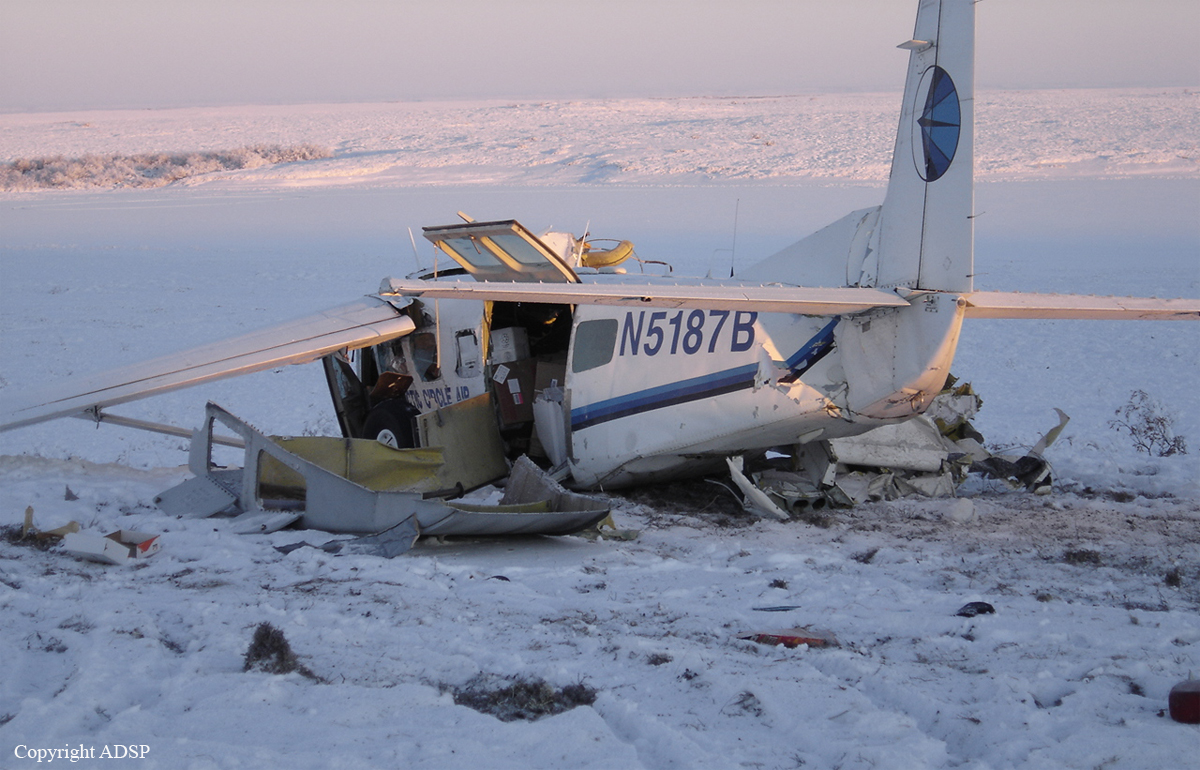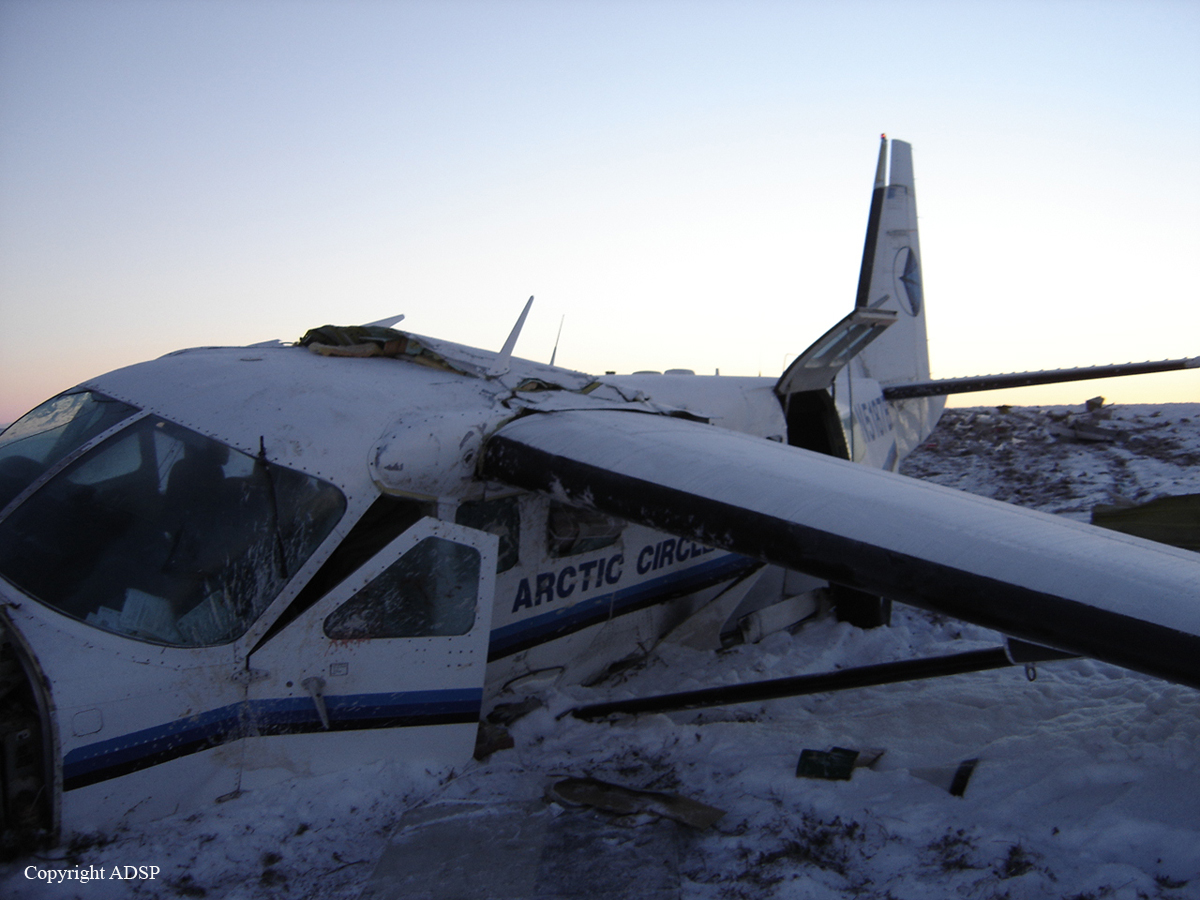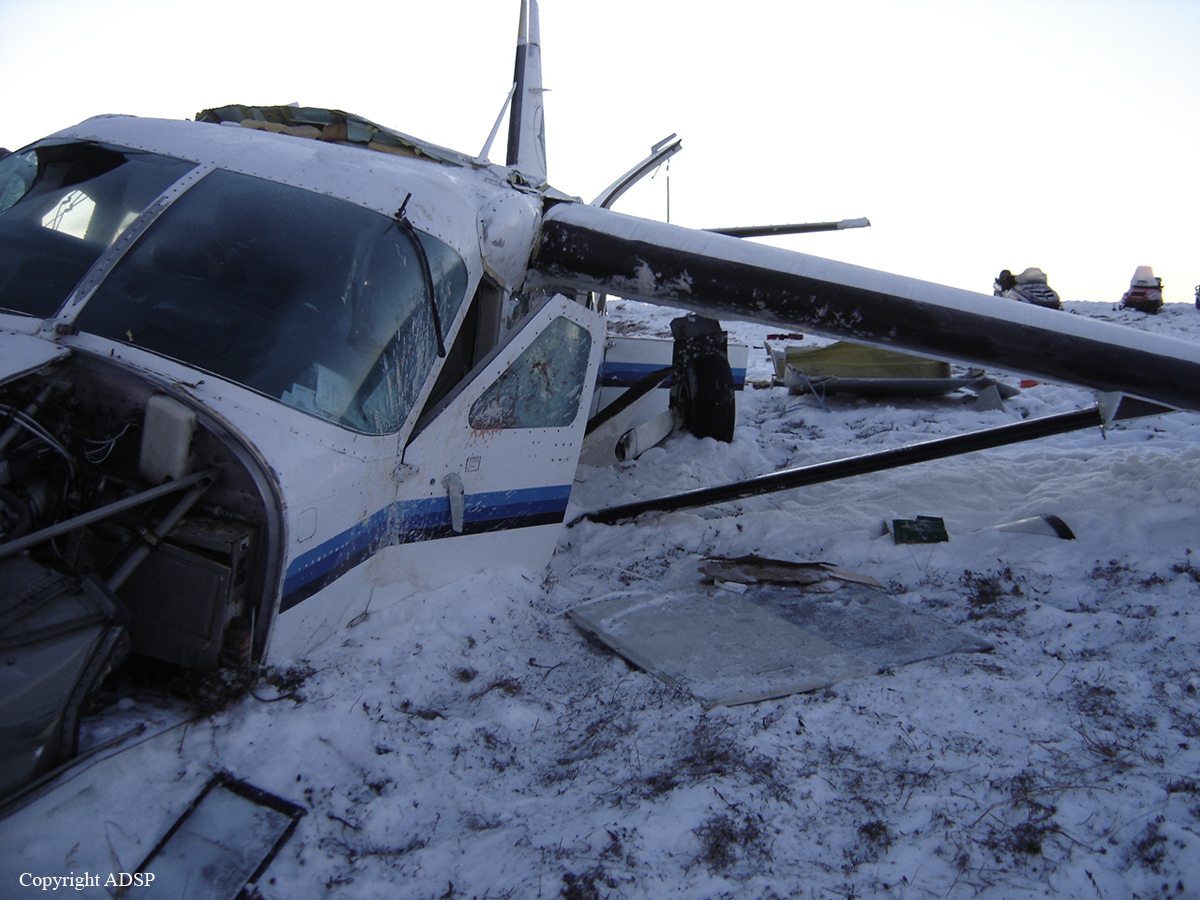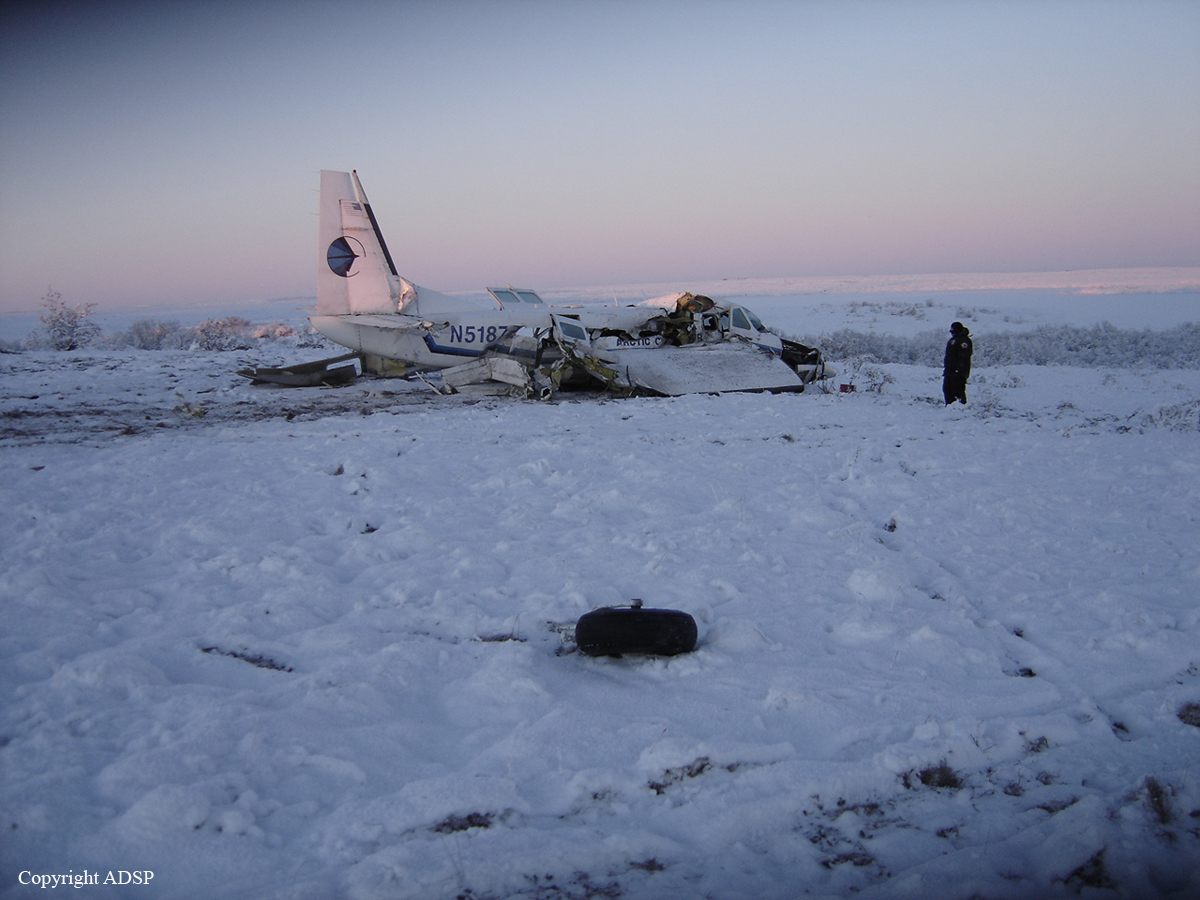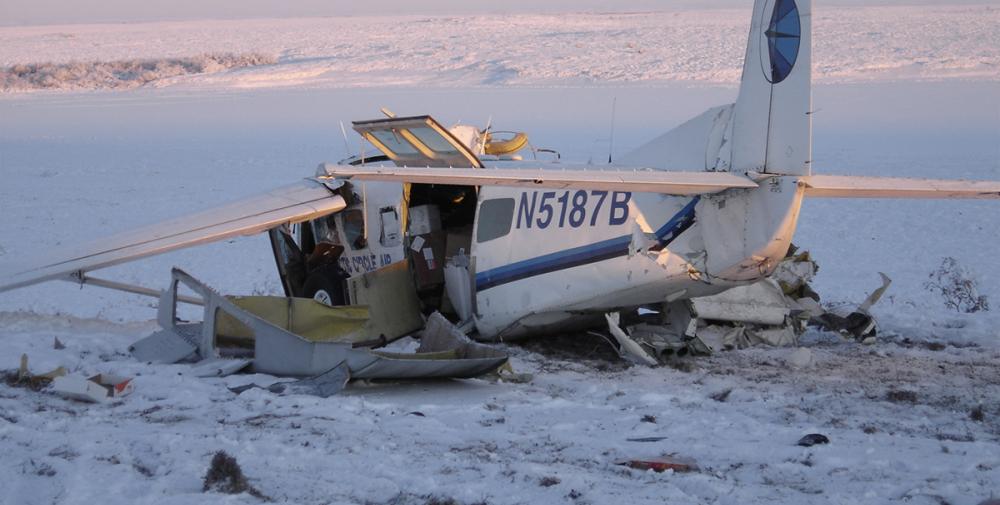Date & Time:
Dec 18, 2007 at 0856 LT
Type of aircraft:
Cessna 208B Grand Caravan
Registration:
N5187B
Flight Phase:
Takeoff (climb)
Flight Type:
Postal (mail)
Survivors:
Yes
Schedule:
Bethel - Hooper Bay - Scammon Bay
MSN:
208B-0270
YOM:
1991
Flight number:
CIR218
Country:
United States of America
Region:
North America
Crew on board:
1
Crew fatalities:
0
Pax on board:
1
Pax fatalities:
0
Other fatalities:
0
Total fatalities:
0
Captain / Total hours on type:
190
Aircraft flight hours:
12204
Circumstances:
About 0800, the commercial pilot did a preflight inspection of the accident airplane, in preparation for a cargo flight. Dark night, visual meteorological conditions prevailed. He indicated that the weather conditions were clear and cold, and frost was on the airplane. He said the frost was not bonded to the skin of the airplane, and he was able to use a broom to clean off the frost, resulting in a clean wing and tail surface. He reported that no deicing fluid was applied. After takeoff, he retracted the flaps to about 5 degrees at 110 knots of airspeed. The airplane then rolled to the right about three times in a manner he described as a wave, or vortex-like movement. He applied left aileron and lowered the flaps to 20 degrees, but the roll to the right was more severe. The pilot said the engine power was "good." He then noticed that the airplane was descending toward the ground, so he attempted to put the flaps completely down. His next memory was being outside the airplane after it collided with the ground. The airplane's information manual contains several pages of limitations and warnings about departing with even small amounts of frost, ice, snow, or slush on the airplane, as it adversely affects the airplane's flight characteristics. The manufacturer requires a visual or tactile inspection of the wings, and horizontal stabilizer to ensure they are free of ice or frost if the outside air temperature is below 10 degrees C, (50 degrees F), and notes that a heated hangar or approved deicing fluids should be used to remove ice, snow and frost accumulations. The weather conditions included clear skies, and a temperature of -11 degrees F. Post accident examination of the airplane revealed no observed mechanical malfunction. An examination of the engine revealed internal over-temperature damage, and minor external fire damage consistent with a massive spike of fuel flow at the time of ground impact. Damage to the propeller blades was consistent with high power at the time of ground impact. The rolling/vortex motion of the airplane was consistent with airframe contamination due to frost.
Probable cause:
The pilot's failure to adequately remove frost contamination from the airplane, which resulted in a loss of control and subsequent collision with terrain during an emergency landing after takeoff.
Final Report:
N5187B.pdf102.24 KB

